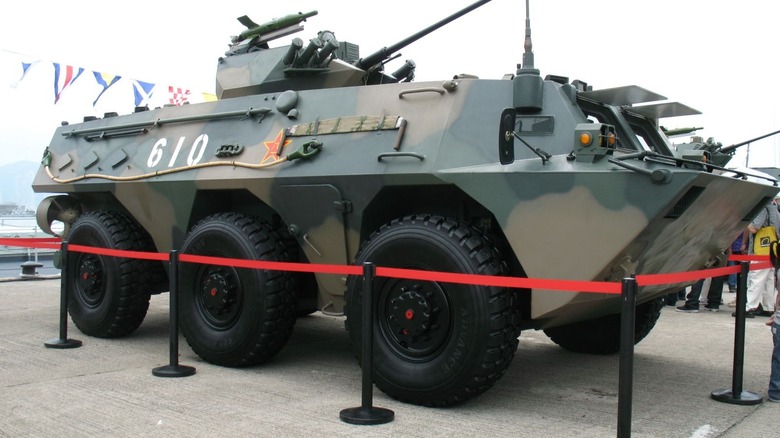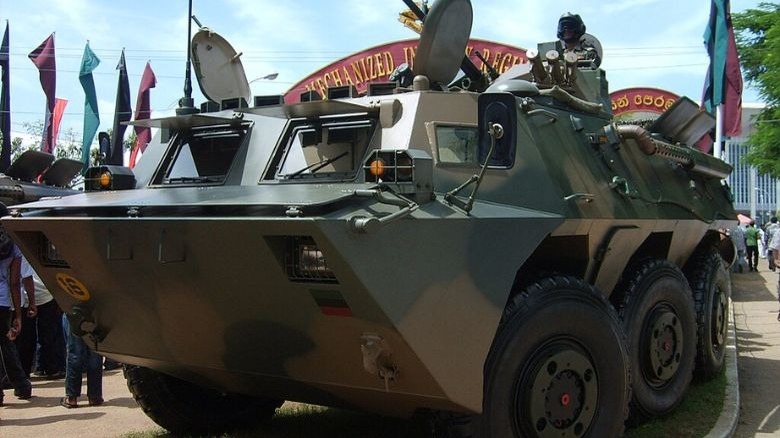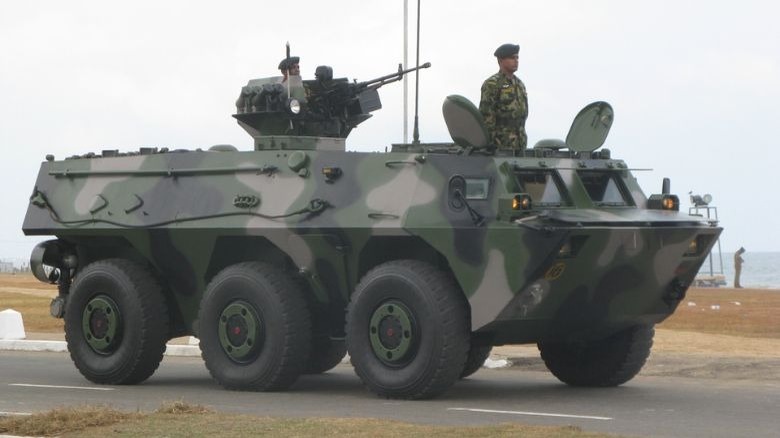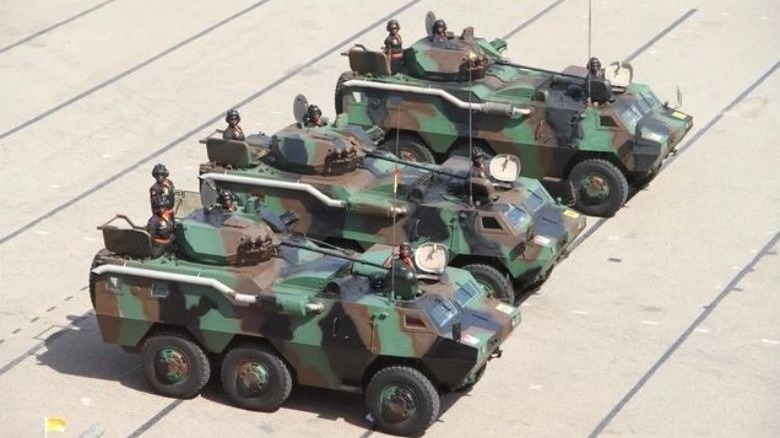Here's What Made The ZSL92 APC Tank Unique From Its Predecessors
While it's true that war never changes, the implements of war absolutely do. Military powers constantly look to improve their arsenal, hoping to exceed the capabilities of older machinery and outgun their opposition. Along the way, production may stumble, and designs may be forfeited for something more viable, as seen with China's WZ-551 family of infantry fighting vehicles (IFV).
From the early 1980s to well into the '90s, years before some of the most innovative tanks like the Type 99 hit the assembly line, engineers of the China North Industries Group Corporation (Norinco) labored over perfecting a new IFV. It would be the first developed by China, following the successful production of the Jiefang CA-30, a personnel carrier. With an eye on post-Cold War United States, a nation that had firmly cemented itself as both a rich and powerful nation, China turned to other countries for inspiration, such as basing the 6x6 chassis on Germany's Mercedes-Benz 2060 truck.
As the project moved forward, two prototypes were made: The ZSL-90 and the ZSL-92. Of those, the ZSL-92 actually went into production, having improved upon the pitfalls of the original model and other armored vehicles used by the PLA. Entered into service in 1995, the armored vehicle was deployed in regions like Algeria and Nepal. Thanks to a significant change made to the propulsion system, it was also able to make long treks across Pakistan, Kenya, and Iran while remaining more efficient.
[Featured image by Negi via Wikimedia Commons | Cropped and scaled | CC BY-SA 3.0 DEED]
Improving the engine of the ZSL92 APC
One of the biggest changes made to the ZSL-92 armored vehicle is the propulsion system. Due to the nature of Chinese military technology, finding solid information about initial ZSL-90 prototypes is difficult. That said, it's rumored that an upgrade from a water-cooled engine to air-cooled Deutz BF8L diesel engine was among one of the largest upgrades for the vehicle. Not only was the weight reduced by removing the more complex water-cooling system, but the propulsion system was more reliable, less likely to malfunction, and better suited for cross-country travel. In addition to these changes to the propulsion, the Type 92 was equipped with a larger fuel tank to improve its range from just over 370 miles to just under 500.
The ZSL-92 is capable of full amphibious travel and features a pair of steerable propellers located behind the rear-most wheels. The Type 92 engine was also more powerful than earlier models, the diesel-fueled propulsion capable of pushing the 15-ton vehicle to speeds of up to 52mph. Even the newer ZSL-92B, which went into production in the late-2000s, retained the air-cooled engine and amphibious travel of the armored vehicles.
[Featured image by Chamal N via Wikimedia Commons | Cropped and scaled | CC BY-SA 3.0 DEED]
Improving the armament
Even before the Type 92 was approved, Norinco was working on a successor to the failed Type 90. Dubbed the NGV-1, development was eventually stopped. However, it carried over one considerable change made to the Type 90 that would become a basis for the ZSL-92's armament. Whereas older armored vehicles in China's employ, like the WZ-523 family, relied on a heavy machine gun configuration, the WZ-551 family opted for a standard 25mm autocannon.
A heavy machine gun is suitable against infantry units but would prove insufficient against even light armored vehicles. The autocannon added anti-vehicle combat capabilities, particularly with shells large enough to take down the Soviet Union's light armored vehicles. Unfortunately, since the armament wasn't stabilized, the cannon and the accompanying 7.62mm Type 86 coaxial machine gun was only useful when stationary.
These configurations changed a little with the Type 92A and Type 92B, with the former returning to the original design of a sole heavy machine gun. The ZSL-92A was equipped with a 12.7mm QJC8 machine gun, which made it cheaper to produce and improved off-road performance. The Type 92B returned the original Type 92's autocannon configuration but increased its armament to a 30mm shell and stabilized it. It also featured a single-rail HJ-73 anti-tank missile launcher on the roof as support for the autocannon.
[Featured image by Slick-o-bot via Wikimedia Commons | Cropped and scaled | CC BY-SA 3.0 DEED]
Outperforming the WZ-523
Before the WZ-551 Type 92 went into production, the PLA was also considering an alternate model — the WZ-523. Developed during the tail end of the Cold War by Norinco, the WZ-523 was specifically configured to meet the needs of the PLA. Also developed on a 6x6 chassis, the WZ-523 was also comprised of a steel-welded body, though there were major differences between it and the Type 92. Ultimately, WZ-523 production was kept to limited quantities as the Chinese military chose the Type 92's enhancements instead.
One of the WZ-523's biggest downfalls was its cross-country performance. The small 165hp engine was vastly outperformed by the Type 92's 320hp diesel engine, making it more efficient for short-range, urban travel. The WZ-523 also sported the older heavy machine gun configuration, though it could also be fitted with a 35mm QLZ-04 automatic grenade launcher. Later models like the WZ-523M adopted the ZSL-92B's 30mm autocannon turret.
While Type 92 was chosen for mass militarized production, China produced the WZ-523 in a very small quantity. Its lower horsepower and less powerful firepower configuration made it more suitable for urban use, and its primary implementation has been with police forces.
[Featured image by Katangais via Wikimedia Commons | Cropped and scaled | Public Domain]



